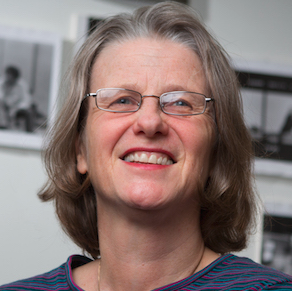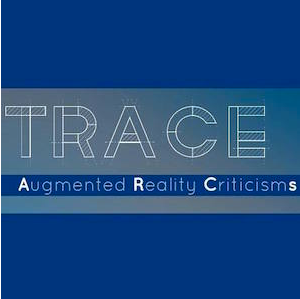Introduction
In August 2014, the technology analytics company comScore reported that 52% of all digital media consumption in the United States took place within mobile applications, officially eclipsing the prior dominance of the traditional desktop interface. As mobile computing grows in popularity and merges with wearable technologies (e.g. optical head mounted displays, smart watches, etc.), our daily interactions with online media are more likely to take place across a variety of digital and physical interfaces.
“Augmented reality” has emerged as a particularly significant innovation in this area, deeply influencing physical space through mobile technology. This year’s Digital Assembly symposium focuses on how augmented reality has been (and will be) applied as a concept and as a technology for a variety of rhetorical purposes.
Symposium Schedule
Thursday, February 11th, (9:00 am-12:30 pm)
- 9:00 am – coffee, snacks, and opening remarks
- 9:30 am – Sean Morey, “’Invisible Nonsense’: Augmented Reality and Everting the English Department
- 10:15 am – Q & A session 1
- 10:30 am – John Tinnell, “Actionable Archives: Of Augmented Reality, Cuneiform, and Red Neon”
- 11:15 am – Q & A session 2
- 11:30 am – Josephine Anstey, “Augmented Consciousness”
- 12:15 am – Q & A session 3 and closing remarks
Friday, February 12th, (9:00 am-11:30 am)
- 9:00 am – coffee, snacks, and opening remarks
- 9:10 am – Sidney I. Dobrin, Introduction to TRACE at UF
- 9:30 am – Jacob Greene “SuperPAC Scramble”
- 10:00 am – Melissa Bianchi “SeeWorld”
- 10:30 am – Madison Jones “Death Drive(r)s”
- 11:00 am – Q & A session and closing remarks
Speakers
 Josephine Anstey, University of Buffalo
Josephine Anstey, University of Buffalo
Augmented Consciousness
Josephine Anstey’s presentation will focus on multi-modal writing as a tool/method for speculative and fictional projects. How can current technology help authors/audiences/players engage contemporary questions about the body, presence, the self and their relationship to materiality, space, and ownership? The first part of the talk will focus on some design issues that are common to Virtual Reality, Mixed Reality, and Augmented Reality in the context of virtual drama and intermedia performance. The second part of the talk introduces her current project, IMPROVISING CONSCIOUSNESS (IMPCON), a creative work of speculative evolution which imagines an affirmative bio-political future. IMPCON is a performance lecture that purports to be a scholarly account of human cognition from 2.5M BCE to 3,000 CE; and accompanying “cognitive exercises” that play at the borders of improvisation, performance, and game. IMPCON challenges conventional forms by aggregating and juxtaposing media elements to support, not only a radical and futuristic argument about consciousness (which includes augmented consciousness), but a mediation on the construction of knowledge.
Josephine Anstey’s career has been concept and project driven, engaging with a wide variety of media practices and using technology as necessary. Experiments with narrative and dramatic forms and questions of identity and consciousness have been constant themes. Her projects include, performance lecture, intermedia performance, interactive computer-mediated experiences, virtual reality, experimental video and prose fiction. Her projects have shown widely in the US, in Europe, South America, and Asia. She is an Associate Professor in the Media Study Department of the University at Buffalo (UB), where she teaches production and analysis courses focusing on game studies, interactive fiction, virtual reality and responsive environments.
 John Tinnell, University of Colorado, Denver
John Tinnell, University of Colorado, Denver
Actionable Archives: Of Augmented Reality, Cuneiform, and Red Neon
Augmented reality technologies propagate a long-marginalized form of the archive—archives that we construct and consult in situ, in medias res, amid everyday hustle and bustle. Akin to cuneiform and urban signage, augmented reality produces actionable archives whereby content fuses with a singular site of lived experience and refuses to break from it. Actionable archives signify at the interstices of composition and circumstance. Libraries, galleries, theaters, and desktop computers, on the other hand, tend to house media in codified spaces that, by design, differ from what surrounds them and prompt audiences to defer their involvement with local action happening outside the walls. Actionable archives summon local action into the play of différance, according a more overt hermeneutical importance to the interplay between media and their surroundings. Historically, the scope of actionable media production has been grossly restricted to corporate advertising and municipal messaging, especially in the case of urban signage. Augmented reality and other post-desktop interfaces condition the possibility for a much wider array of contributors to create actionable archives and to author the built environment.
John Tinnell is an Assistant Professor of English at the University of Colorado Denver. He writes about digital technologies and creative practices that integrate with the built environment to affect urban culture. His current book project is titled Actionable Media: Digital Culture beyond the Desktop. Several of his recent publications study augmented reality in the context of impressionism, phenomenology, and contemporary media theory.
 Sean Morey, Clemson University
Sean Morey, Clemson University
“Invisible Nonsense”: Augmented Reality and Everting the English Department
As an electronic technology, augmented reality (AR) has been in development for several decades, at least as far back as the early 1990s when Tom Caudell, working for Boeing, coined the term while developing aviation applications. While AR has a firm presence in many computer science and engineering departments, it is only recently that English departments have begun to look at augmented reality as a textual mode in need of critique. However, even fewer English departments have recognized AR has a medium in need of humanistic intervention at the discursive, rhetorical, and developmental levels. This talk argues that English departments must continue to evolve by incorporating new, emerging texts into their study, and that this study must be a balance of intellectual and ideological critique, but also imaginative development. That is, English departments, and the humanities in general, must imagine and develop their own AR applications and tools in order for this writing technology to do the work of the humanities, work that must evert out into the everyday world, the internet of things, beyond the borders of traditional academic publishing in print and digital forms.
Sean Morey is an Assistant Professor of English at Clemson University where he teaches writing and digital media. His research focuses on developing theories of electracy, the intersection between digital media, rhetoric, composition, and the environment, as well as the role of visual rhetoric in constructions of nature and environment. He is the author of Rhetorical Delivery and Digital Technologies (Routledge, 2015), The New Media Writer and The Digital Writer (Fountainhead Press, 2014 and 2016), and—along with Sidney I. Dobrin—has co-edited the collection Ecosee: Image, Rhetoric, Nature (SUNY Press, 2009). He is currently co-editing—with John Tinnell—a collection on augmented reality titled Augmented Reality: Perspectives across Art, Industry, and the Humanities (forthcoming Parlor Press).
 TRACE presents “SuperPAC Scramble,” “SeeWorld,” and “Death Drive(r)s”
TRACE presents “SuperPAC Scramble,” “SeeWorld,” and “Death Drive(r)s”
The TRACE innovation initiative is a research endeavor developed and maintained by the University of Florida’s Department of English. TRACE works at the intersection of ecology, posthumanism, and writing studies. Providing an interdisciplinary forum for scholars, we focus on the ethical and material impact of media. Several TRACE graduate students will present their augmented reality criticism (ARCs) projects.